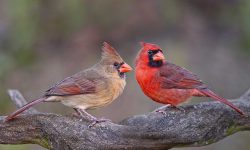Each year, millions of birds take to the skies and journey thousands of miles between breeding and wintering grounds. These migrations, driven by instinct, changing seasons, and the need for food, represent one of nature’s most awe-inspiring phenomena. In this article, we explore 25 remarkable migratory birds from around the world—some celebrated for their colors, others for their endurance, and all for their spectacular voyages.
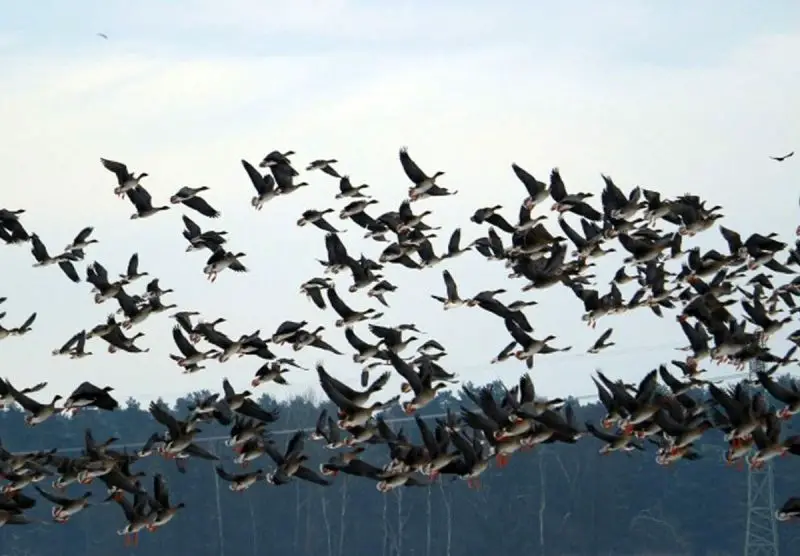
Bold and Beautiful: Birds with Stunning Plumage
Scarlet Tanager (Piranga olivacea)
The Scarlet Tanager is a breathtaking songbird native to North America, easily recognized during breeding season by the male’s intense scarlet-red body and contrasting jet-black wings and tail. This dazzling coloration plays a critical role in sexual selection, helping males attract mates while signaling fitness.
Outside the breeding season, males molt into olive-yellow plumage that closely resembles females, aiding in camouflage during their long migratory journeys. These birds migrate from the tropical lowland forests of South America—especially in the Andes foothills—to the temperate deciduous woodlands of eastern North America.
Scarlet Tanagers feed primarily on insects and soft fruits, and their migration is closely timed with peak insect availability in both their breeding and wintering grounds.
European Bee-eater (Merops apiaster)
The European Bee-eater is one of the most vibrantly colored birds found across Europe, displaying a palette that includes emerald green, sky blue, bright yellow, and rusty orange. This slender bird is an agile flyer, expertly adapted for catching flying insects midair, particularly bees, wasps, and dragonflies.
It breeds in southern and central Europe as well as parts of western Asia, nesting colonially in sandy banks where it digs horizontal tunnels for laying eggs. During the non-breeding season, it migrates to sub-Saharan Africa, often flying in large flocks across the Mediterranean and Sahara Desert.
With its social behavior, acrobatic feeding style, and vivid plumage, the European Bee-eater is a highlight for birdwatchers and ecotourism enthusiasts alike.
Indian Pitta (Pitta brachyura)

Nicknamed the “Nine-Colored Bird” due to its multicolored plumage, the Indian Pitta is a small, ground-dwelling bird found throughout the Indian subcontinent. It features a blend of green, blue, buff, orange, and black with a bold white throat and a striking black crown stripe.
This species is a partial migrant, moving from its breeding grounds in the Himalayan foothills and central India to the southern peninsular region during the monsoon season. Its preferred habitat includes dense, moist deciduous forests and undergrowth-rich scrublands.
The Indian Pitta is a shy but vocal bird, often heard before it is seen, with a sharp, two-note whistle that echoes through the forest floor. It feeds on insects, earthworms, and snails, using strong legs and a slightly curved bill to forage among leaf litter.
Northern Carmine Bee-eater (Merops nubicus)
Known for its show-stopping appearance, the Northern Carmine Bee-eater boasts a vivid pinkish-red body complemented by turquoise-blue underwings, rump, and crown. Native to sub-Saharan Africa, this species is commonly found along river valleys, savannas, and dry open woodlands.
It exhibits localized seasonal migration, often following insect emergence patterns driven by rainfall. These birds travel in large, vocal flocks and nest in vertical banks by excavating long tunnels, sometimes forming dense nesting colonies.
Besides their colorful feathers, Northern Carmine Bee-eaters are admired for their cooperative social behavior. They often perch together on high branches or wires, scanning for flying insects and launching into the air with remarkable speed and precision.
Painted Bunting (Passerina ciris)
Often described as “a bird straight out of a coloring book,” the male Painted Bunting displays a brilliant blend of blue (head), green (back), and red (underparts), making it one of the most vividly colored birds in North America. Females and juveniles, in contrast, are primarily green, offering camouflage among foliage.
This species breeds in two separate populations: one in the southeastern United States (from Florida to the Carolinas) and another in the south-central U.S. (including Texas and Louisiana). After the breeding season, Painted Buntings migrate to Mexico, Central America, and parts of the Caribbean, especially Cuba and the Yucatán Peninsula.
They are primarily seed-eaters but switch to insects during the breeding season to meet higher nutritional needs. Unfortunately, the species is under threat due to habitat loss and illegal trapping for the pet trade, especially in parts of Mexico and the Caribbean.
Long-Distance Champions: Birds That Travel the Farthest
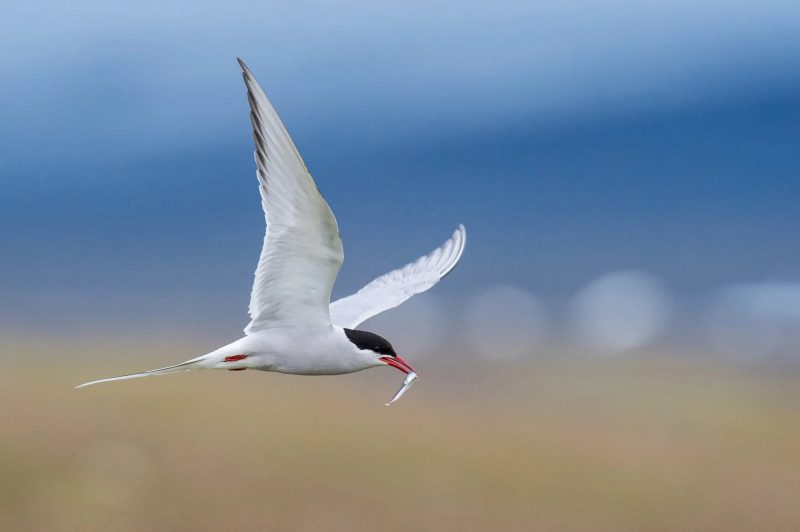
Arctic Tern (Sterna paradisaea)
The Arctic Tern is the undisputed champion of migration, holding the world record for the longest known annual journey in the animal kingdom. Each year, this slender seabird undertakes a round-trip of nearly 44,000 miles (71,000 kilometers), traveling from its breeding grounds in the Arctic to its wintering grounds in the Antarctic, and back again.
What makes the Arctic Tern truly remarkable is that it experiences two summers every year, taking advantage of extended daylight hours at both poles. Over the course of its lifetime—up to 30 years—an individual may fly more than 1.5 million miles, the equivalent of three round trips to the Moon.
This species navigates across vast oceans using a combination of celestial cues, geomagnetic fields, and wind currents, demonstrating one of the most advanced migratory behaviors in the avian world.
Bar-tailed Godwit (Limosa lapponica)
The Bar-tailed Godwit is famous for completing the longest non-stop migratory flight of any bird. Individuals of the subspecies baueri have been tracked flying from Alaska to New Zealand, covering up to 7,000 miles (11,000 kilometers) in eight to nine days—without landing, eating, or drinking.
To accomplish this astonishing feat, Bar-tailed Godwits undergo extreme physiological changes before migration: they nearly double their body weight, enlarge their flight muscles, and shrink non-essential organs like the digestive tract.
These endurance migrants rely on favorable wind patterns and possess an exceptional ability to navigate over open oceans. Their journey is one of the most extreme tests of stamina and survival in the natural world.
Sooty Shearwater (Ardenna grisea)
The Sooty Shearwater, a medium-sized seabird of the Procellariidae family, undertakes an 18,000-mile figure-eight migration each year. This complex route takes it from nesting islands near New Zealand and southern South America to feeding grounds in the North Pacific, near Alaska, Japan, and California.
These birds time their migration to follow areas of high ocean productivity, feeding on fish, krill, and squid. Their migratory loop ensures they are in nutrient-rich waters during all seasons.
Sooty Shearwaters use a form of dynamic soaring, gliding along wind gradients over the ocean’s surface to conserve energy. Their migration is not only one of the longest, but also among the most aerodynamically efficient in the avian world.
Red Knot (Calidris canutus)
The Red Knot is a stout-bodied shorebird that migrates more than 9,000 miles annually, traveling from the Arctic tundra—where it breeds—to Tierra del Fuego at the southern tip of South America. It makes critical stopovers along the way, especially in Delaware Bay, to feed on the nutrient-rich eggs of horseshoe crabs.
This synchronized migration with crab spawning is a vital survival strategy, as it provides the energy reserves needed for the rest of the journey. The dependence on this specific food source highlights the species’ vulnerability to habitat disruption and climate-related changes.
Six subspecies of Red Knots exist globally, some of which are experiencing rapid population declines, making it a priority for conservation efforts.
Swainson’s Hawk (Buteo swainsoni)
The Swainson’s Hawk is a soaring raptor renowned for its long-distance terrestrial migration, traveling over 6,000 miles from its breeding grounds in the grasslands of western Canada and the United States to its wintering areas in Argentina.
What sets this species apart is its tendency to migrate in enormous flocks, sometimes numbering in the tens of thousands—a phenomenon known as a “kettle.” These flocks use thermal updrafts to gain altitude and glide for hours without flapping their wings, conserving energy over long stretches.
Unlike many raptors, Swainson’s Hawks switch from a diet of small mammals during breeding season to a diet dominated by insects, especially grasshoppers and dragonflies, during migration and winter.
Unique Behaviors and Traits
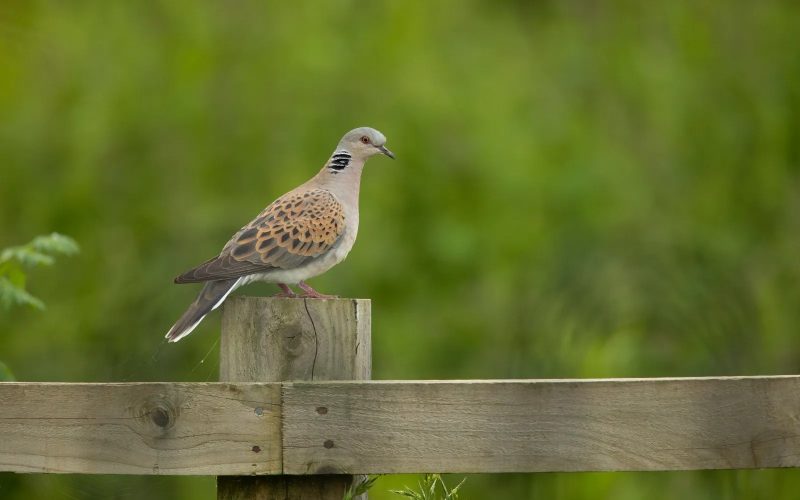
Common Cuckoo (Cuculus canorus)
The Common Cuckoo is one of the most iconic examples of brood parasitism in the bird world. Instead of building its own nest, the female lays her eggs in the nests of other bird species, particularly reed warblers and pipits, tricking them into raising the cuckoo chick as their own.

This behavior is complemented by remarkable mimicry: the cuckoo’s eggs often resemble those of the host species in size and color. Once hatched, the cuckoo chick instinctively ejects the host’s eggs or young from the nest to monopolize parental care.
Common Cuckoos migrate from Europe and Asia to sub-Saharan Africa, traveling up to 7,500 miles round-trip. Despite never receiving migration guidance from their parents, juvenile cuckoos display highly accurate navigation, guided by an innate migratory program that is still not fully understood.
Blackpoll Warbler (Setophaga striata)

The Blackpoll Warbler is a tiny songbird with a migration route that defies its size. Weighing just 12 grams, it makes one of the most aerobically demanding flights of any land bird—non-stop over the Atlantic Ocean for up to 1,800 miles, from the eastern United States and Canada to northern South America.
This flight lasts for three days and nights, during which the warbler burns half its body weight, relying on precisely timed fat accumulation before departure. What’s more astonishing is that this species chooses the trans-oceanic route over a safer land-based one, likely to avoid predators and take advantage of wind patterns.
Its feat of endurance, navigation, and timing is one of the great marvels of bird migration, attracting admiration from ornithologists worldwide.
Sandhill Crane (Antigone canadensis)
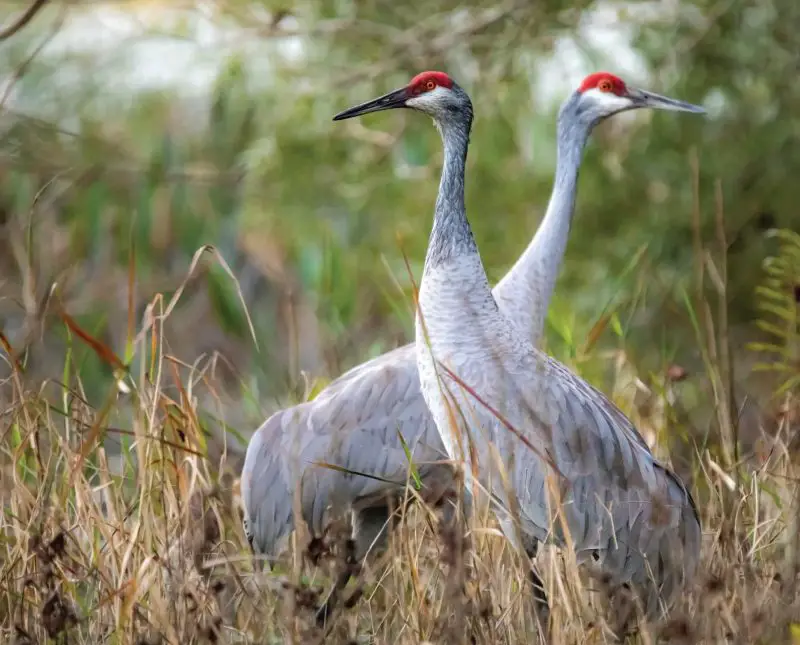
Sandhill Cranes are famous for their haunting, trumpet-like calls that echo across the skies during migration. These tall, elegant birds migrate in large, V-shaped flocks, often consisting of hundreds or even thousands of individuals.
Their migration spans from the northern U.S., Canada, and Alaska to Mexico and the southern United States, with a spectacular stopover at Nebraska’s Platte River Valley. Each spring, over 600,000 cranes gather here to rest and feed, creating one of the most impressive birding events in North America.
Beyond their calls and social formations, Sandhill Cranes also perform elaborate courtship dances that involve bowing, jumping, and wing-flapping—behaviors that strengthen pair bonds and are often observed even during migration.
White Stork (Ciconia ciconia)
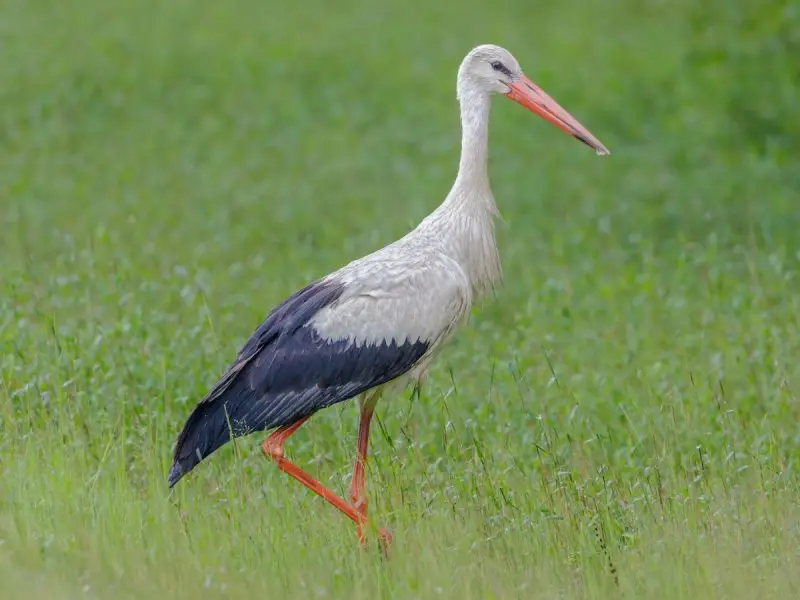
The White Stork is deeply embedded in European folklore, often associated with delivering babies. In reality, this large wading bird is a skilled long-distance migrant, traveling from Europe to sub-Saharan Africa each year along two primary flyways: through the Iberian Peninsula and Morocco, or through eastern Europe and the Middle East.
What sets this species apart is its thermal soaring behavior. White Storks avoid long water crossings (like the Mediterranean Sea) because they rely on rising columns of warm air, or thermals, to gain altitude and conserve energy while gliding.
They often travel in large flocks called kettles, alongside other soaring birds like raptors and pelicans. Their return each spring is celebrated in many rural European towns, where people build special nesting platforms on rooftops and chimneys.
Amur Falcon (Falco amurensis)
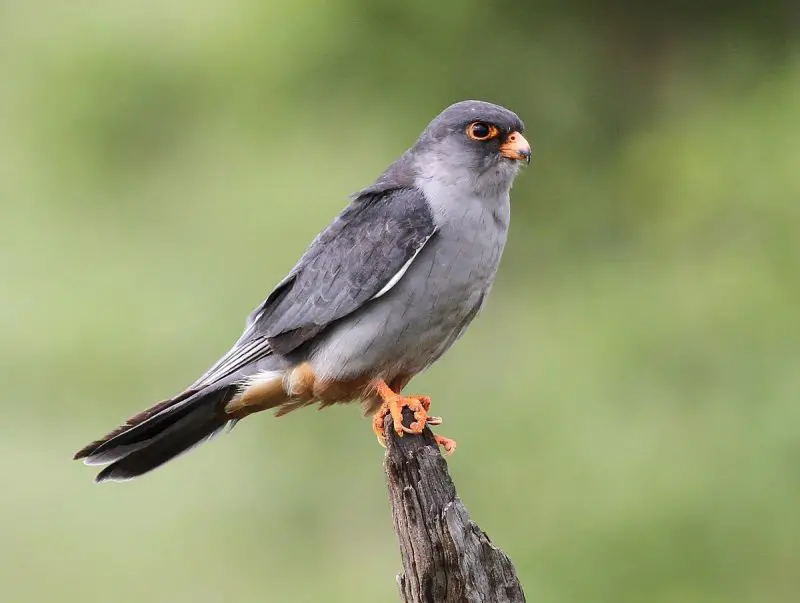
The Amur Falcon is a small, fast-flying raptor that undertakes one of the longest migratory journeys of any bird of prey. It breeds in eastern Asia—notably northeast China, Mongolia, and Russia—and winters in southern Africa, covering up to 13,000 miles round-trip.
One of the most extraordinary aspects of its migration is the non-stop flight over the Arabian Sea, where thousands of individuals cross over 3,000 miles of open water in a single stretch. During this flight, they rely on insects caught in midair and favorable wind currents.
Unlike many raptors, Amur Falcons are highly social during migration, roosting in massive communal flocks of up to a million individuals in places like northeast India, where they stop to rest and feed on termites and other flying insects—a spectacular phenomenon that has gained global eco-tourism interest.
Conservation Highlights: Birds Under Threat
Yellow-breasted Bunting (Emberiza aureola)

Once described as the “rice bird” for its abundance in rice paddies across Europe and Asia, the Yellow-breasted Bunting has suffered a catastrophic population decline—over 90% since the 1980s. Formerly one of the most widespread songbirds in the Eurasian region, it is now classified as Critically Endangered on the IUCN Red List.
The main causes are illegal mass trapping for food, especially in parts of China and Southeast Asia, and the loss of wetland and farmland habitats. Despite this, the species still migrates thousands of miles annually between its breeding grounds in northern Eurasia and wintering areas in South and Southeast Asia.
Yellow-breasted Buntings serve as a powerful example of how human demand for wildlife can rapidly push once-common species to the brink of extinction.
Spoon-billed Sandpiper (Calidris pygmaea)
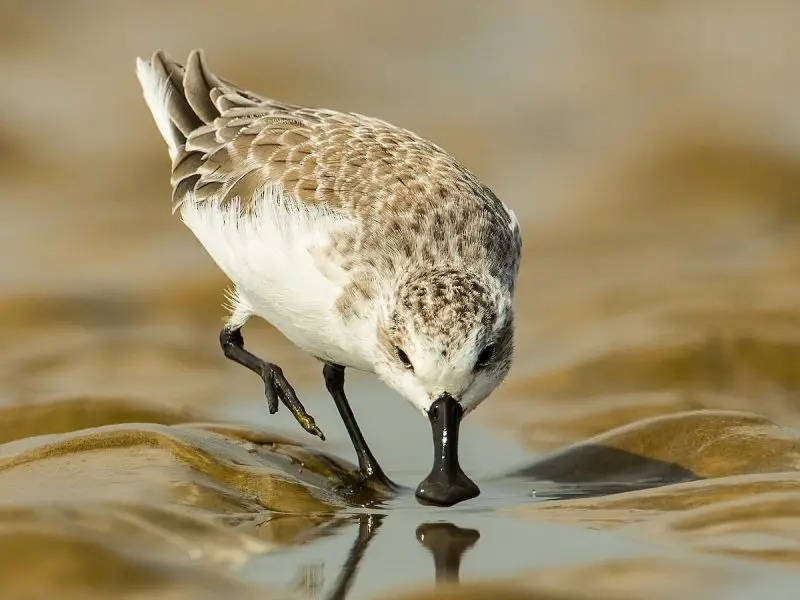
The Spoon-billed Sandpiper is one of the world’s most charismatic and critically endangered shorebirds, instantly recognizable by its spoon-shaped bill. Breeding in the remote tundras of northeastern Russia, it migrates to Southeast Asia, stopping in China, Korea, and Bangladesh along the way.
Its population is estimated to be fewer than 250 mature individuals, with key threats including coastal reclamation, pollution, and habitat disturbance along migratory flyways.
Conservation efforts include head-starting programs, captive breeding, and international cooperation across multiple countries to protect vital stopover wetlands. The Spoon-billed Sandpiper has become a flagship species for East Asian–Australasian Flyway conservation.
Oriental White Stork (Ciconia boyciana)
![]()
Closely related to the White Stork, the Oriental White Stork is a large, elegant bird native to eastern Russia, China, Japan, and Korea. It was once widespread, but suffered sharp declines due to wetland drainage, urban expansion, and the use of agricultural pesticides.
The species is now regionally extinct in some parts of its former range, such as Japan, though reintroduction programs have shown signs of success in recent years. Captive breeding and re-wilding efforts, particularly in Hyōgo Prefecture, have led to small but growing wild populations.
Migratory patterns of the Oriental White Stork span large areas of East Asia, making cross-border cooperation essential for its survival. Protected wetland habitats along the flyway are critical for the future of this majestic bird.
Siberian Crane (Leucogeranus leucogeranus)

The Siberian Crane is revered as a symbol of conservation in both Russia and China. This long-legged, snow-white crane breeds in the Arctic tundra of western and eastern Siberia, with two primary migration routes: one population winters in Iran via the western flyway, and the other in China’s Poyang Lake via the eastern route.
The western population is now nearly extinct, while the eastern group remains under threat due to wetland degradation, water management projects, and agricultural encroachment. Poyang Lake, the most important wintering site, is being monitored and protected through international conservation programs.
With only around 3,500 individuals remaining, the Siberian Crane is listed as Critically Endangered, and serves as a focal point in initiatives like the Crane Flyway Network and CMS Memorandum of Understanding.
Baird’s Sandpiper (Calidris bairdii)

The Baird’s Sandpiper is a small Arctic shorebird with a highly demanding migratory route. It breeds in Alaska and northern Canada and migrates to southern South America, including parts of Argentina and Chile—a journey of more than 9,000 miles one way.
Though not currently classified as endangered, it is considered near-threatened due to its dependence on fragile coastal and inland wetlands during both migration and wintering. These habitats are increasingly under threat from climate change, agricultural conversion, and human disturbance.
Researchers continue to track its movements with geolocators, learning more about how such a small bird can sustain such a massive journey. Protecting key stopover sites in the United States, Mexico, and South America is essential for its continued survival.
Unexpected Travelers: Birds You Might Not Expect to Migrate
American Robin (Turdus migratorius)
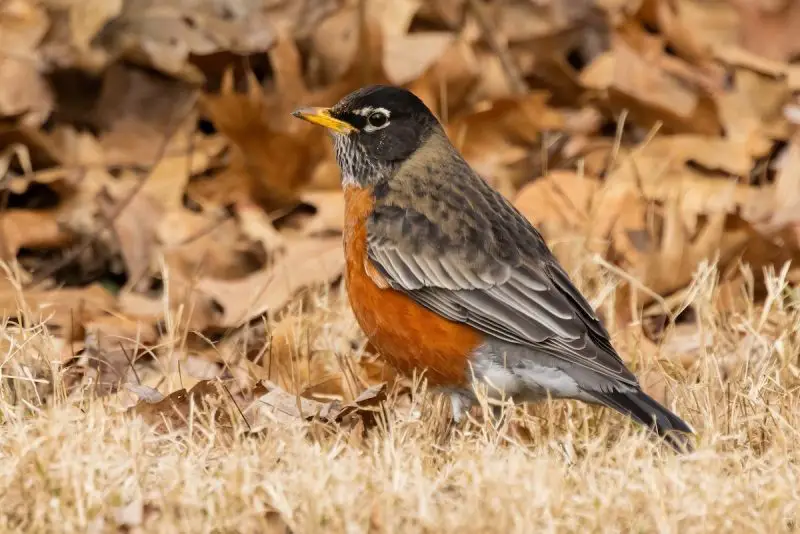
The American Robin is widely regarded as a symbol of spring in North America, often seen hopping across suburban lawns. While many people assume it’s a year-round resident, the truth is more nuanced. Robins do indeed migrate, especially those from northern breeding grounds in Canada and the northern U.S..
These robins travel south to the southern United States and Mexico in winter, although some populations in temperate zones may stay put if food (especially berries) remains available. Their migration is less about temperature and more about food availability, making their patterns irregular and region-dependent.
This partial migration leads to confusion, with some residents spotting robins in winter and assuming they don’t migrate at all—making them unexpected yet reliable seasonal travelers.
Killdeer (Charadrius vociferus)

Famous for its loud, piercing cries and theatrical “broken-wing” displays used to distract predators from its nest, the Killdeer is a familiar sight in open fields, golf courses, and even parking lots.
Though often assumed to be non-migratory due to its visibility year-round in parts of the U.S., Killdeers undertake seasonal migrations, especially those breeding in Canada and the northern U.S. They winter in the southern United States, Mexico, and even as far south as Central America.
Their ability to adapt to urban and disturbed habitats makes their migratory behavior easy to overlook, but they are indeed regular long-distance migrants within the Americas.
Barn Owl (Tyto alba)

Known for its ghostly appearance and silent, nocturnal flight, the Barn Owl is a globally distributed species often considered sedentary. However, some populations are migratory, especially those in colder climates or regions with fluctuating rodent populations.
For example, in parts of North America and northern Europe, Barn Owls may move southward in winter in search of prey such as voles and field mice. In harsh winters, some individuals may travel hundreds of miles to avoid starvation.
This migration is often irregular and food-driven, making the Barn Owl an unexpected but adaptive migrant in parts of its range.
Blue Jay (Cyanocitta cristata)
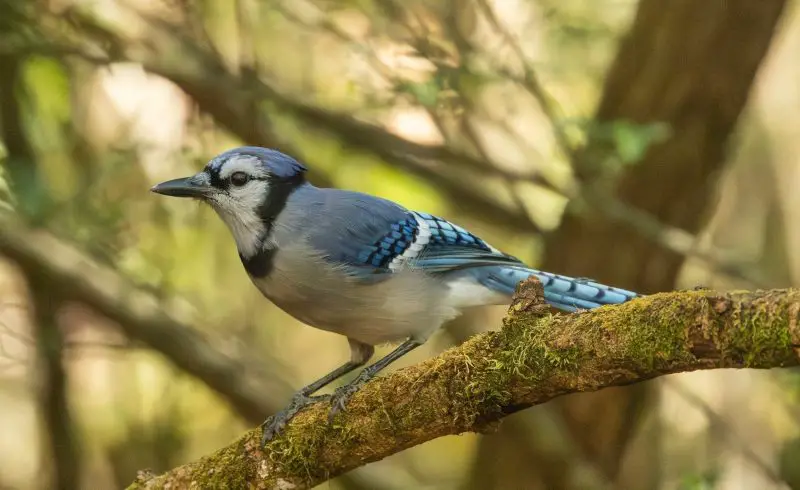
The Blue Jay is a bold, intelligent bird common across eastern and central North America. Typically thought of as a year-round resident, especially due to its vocal presence and conspicuous blue coloration, this species actually exhibits partial and unpredictable migration.
Each fall, large flocks of Blue Jays—sometimes numbering in the hundreds—can be seen flying along coastlines and river valleys. However, not all individuals migrate, and scientists still don’t fully understand what determines which birds leave and which stay.
Their migratory behavior varies from year to year, making them one of the most enigmatic migrants among common backyard birds.
Northern Harrier (Circus hudsonius)
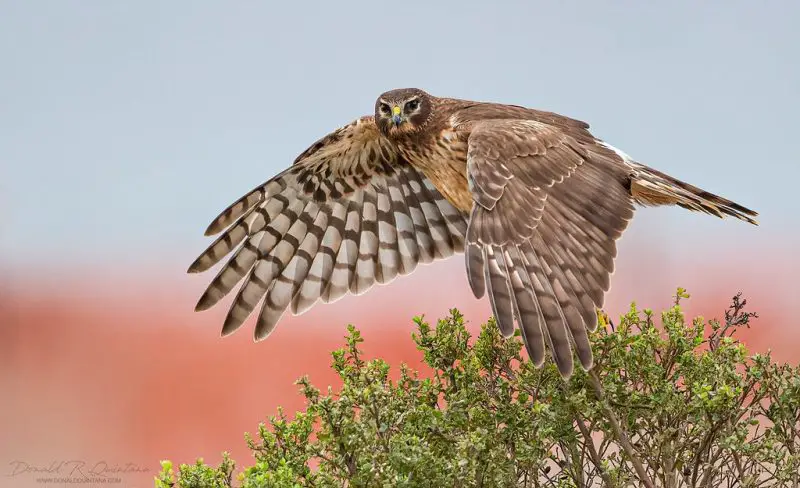
This slim, long-winged raptor is often seen gliding low over open fields and marshlands, hunting small mammals and birds. While some populations of Northern Harrier are year-round residents, particularly in southern North America, others are strongly migratory.
Birds from Canada and the northern U.S. head south for the winter, sometimes reaching Central America. Interestingly, some individuals may stay behind during mild winters if local food supplies are sufficient.
Their variable migration strategy and subtle winter presence make them an underappreciated migratory species, especially since many observers only associate migration with more conspicuous flocks.
Conclusion
The world of migratory birds is vast, varied, and filled with astonishing stories of survival, endurance, and beauty. Whether crossing oceans or just moving across regions, these 25 birds remind us of the intricate web of life that spans our planet. Protecting them ensures the skies remain full of their song and color for generations to come.






